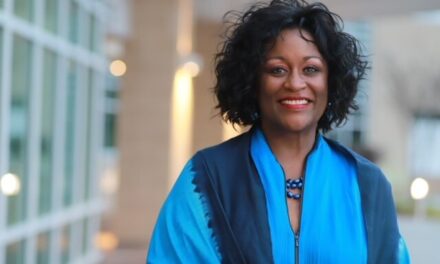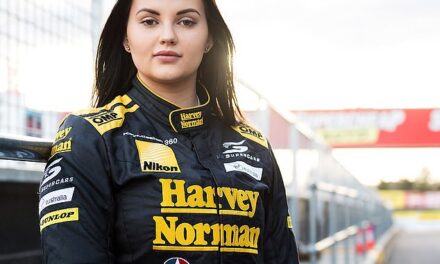Some trailblazers hit the spotlight, while others stay hidden in the shadows.
Up until recently, Cheryl White was one of the latter.
White, who died in 2019, was the first Black female jockey in thoroughbred racing. Raised in Rome, Ohio, with a father who was a horse trainer, she first competed at 17 at Thistledown Race track outside Cleveland in 1971, three years after women won the right to compete as jockeys.
Her story is told in “The Jockey and Her Horse,” a book for young readers written by White’s younger brother, Raymond White, Jr. and New York Times reporter Sarah Maslin Nir.
“I’ve always been my sister’s biggest fan. When she first started riding, and throughout the years. I was always there shouting, ‘Hey, there’s my sister!'” Raymond White said. “But my sister just never talked about herself. She kind of let her own star fade over the years.”
Black history:‘The stakes were higher.’ How Ohio Black women fought for women’s suffrage


The idea for the book came about when Nir met Raymond at a celebration at Thistledown honoring the 50th anniversary of Cheryl’s first race.
Nir, like Cheryl and Raymond, had been involved with horses from an early age. Before telling Cheryl’s story, she wrote a memoir for adults about her own experience with horses, “Horse Crazy,” and a fictionalized version of her childhood for young readers, “The Flying Horse.” She was on the lookout for another horse story to tell when she found out about Cheryl White’s.
“I had never heard about Black jockeys, which just shows how suppressed and erased their story is. Then I was on Instagram, and I saw this ‘kidfluencer’ called Madison Jade, in little pink riding pants. It said Madison was inspired by the first female Black jockey, Cheryl White. And I was like, ‘What?'”

She started doing some research, and found out that the race honoring Cheryl at Thistledown was going to be held in just a few days.
“She came out to do a story on Cheryl and the race, and we just instantly bonded,” Raymond said. “She interviewed me and the family, and we all connected. She said, ‘Hey, this should be a documentary, this should be a movie, this should be a book, this should be a toy.’ It kind of took on a life of its own.”
Nir interviewed not only members of the White family, but others who had known the rider as a child and young adult, including her best friend Earlene, who plays an important part in the book.
The novel is a fictionalized version of Cheryl’s story, from the time she was 14, longing to be a jockey but prohibited from doing so because of her gender, to the time she won her first race, a few months after she first competed at Thistledown.

Black history:How an Ohio woman’s project captures Black Americans’ stories
Nir and Raymond alternate between the points of view of Cheryl and the horses on whose backs she rode her first race and her first winning race, Ace Reward and Jetolara.
While the novel is based on fact, the authors take some artistic license. They, for example, send high schooler Cheryl to Senegal for an academic quiz bowl, a trip the real person never took.
“We did that to tell the story of enslaved people in thoroughbred racing. Cheryl goes on a journey, discovering herself, and we like to think the reader is alongside her,” Nir said.
While Black jockeys were prohibited from racing for much of the 20th century, they were deeply involved in the history of thoroughbred racing − even dominating the Kentucky Derby.
“It was an entirely Black sport until about the ’30s, when they were Jim Crowed out of it,” Nir said.
While “The Jockey and Her Horse” is intended for readers 8 to 12 years old, adult readers can also appreciate it.
“The older you are, the more you’re going to get out of this book,” Nir said. “If you’re a kid, you’re going to get a rip-roaring story about a really cool teenager doing this pioneering feat, and her awesome horse. If you’re an adult, you’re going to understand the Black legacy of thoroughbred racing in this country.”
Kids and collectors can also purchase a toy rider and horse along with the book, from the Breyer toy company, which has been making model horses since 1950.
“It’s the first Black equestrian they’ve made in their 75-year history. It’s really her face. Raymond and I were very insistent that she have Black hair. Cheryl had what she called her little ‘puffball’ that would stick out of her helmet. We wrote this book so kids would see themselves in it,” Nir said.

When asked to describe his sister in one word, Raymond replied with “fearless.”
“As a 17-year-old girl, in front of a sold-out crowd at Thistledown … she never looked like she was nervous at all, but she had to be,” he said. “And then as a Black woman, coming up in 1971 in the middle of all the turmoil and racial tension in this country. Women jockeys were kind of berated. They were told by people in the audience to go home, go cook something in the kitchen. In the face of all that, she still pursued her dreams.”
Raymond had even more dreams for his sister.
“I wish I could have had a Cheryl White jockey school with her there, training, teaching kids to be jockeys,” he said. “She was tough, man. She liked to give you her opinion. She was a real competitor.”
margaretquamme@hotmail.com




